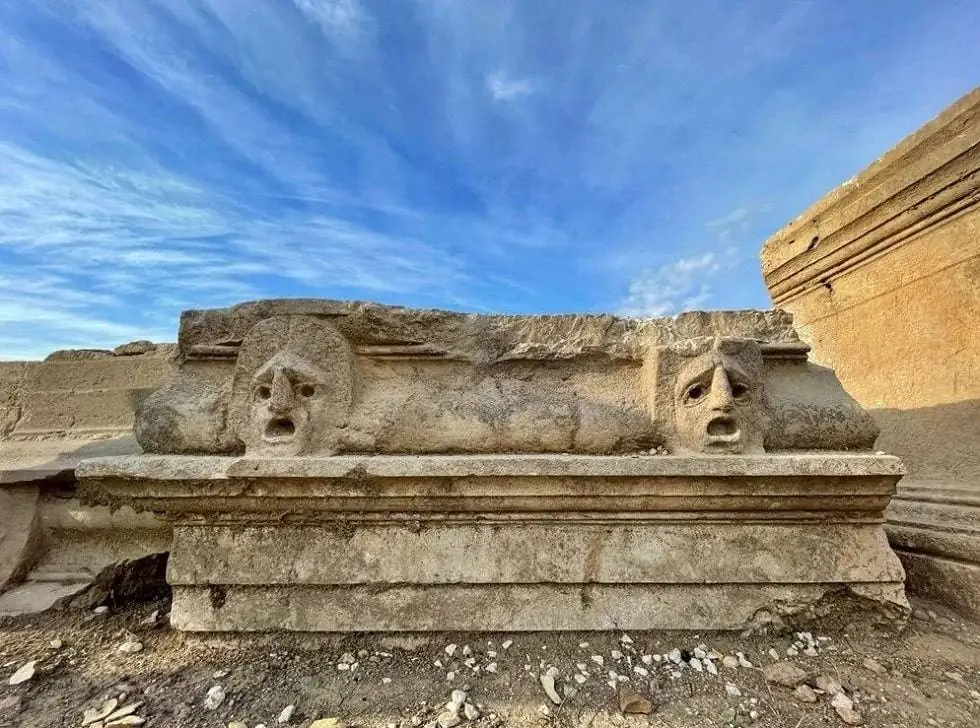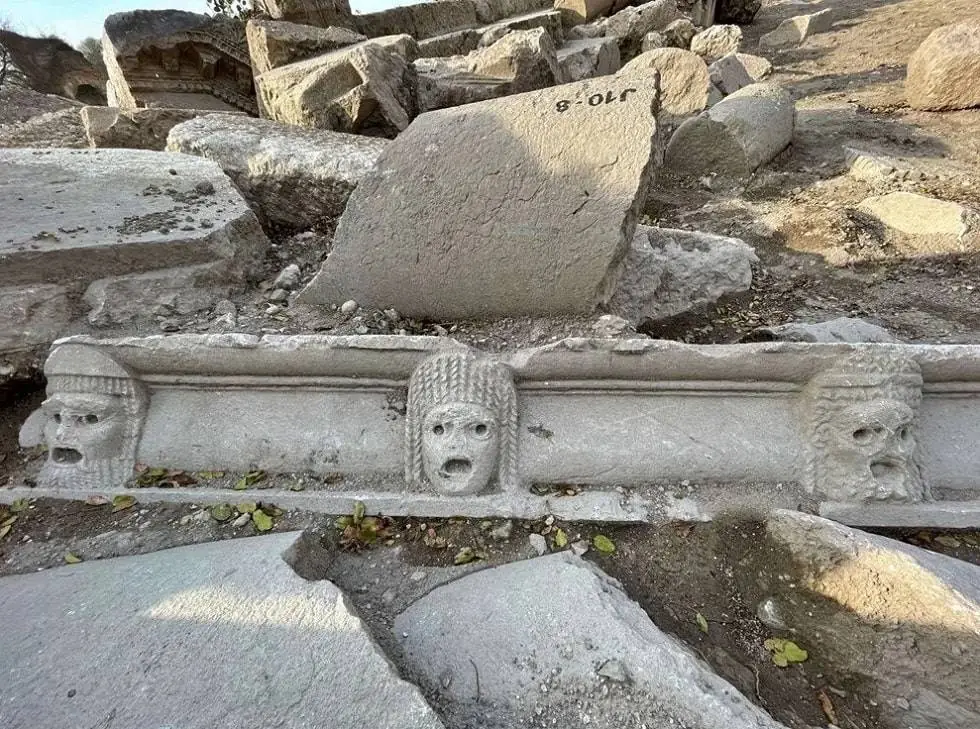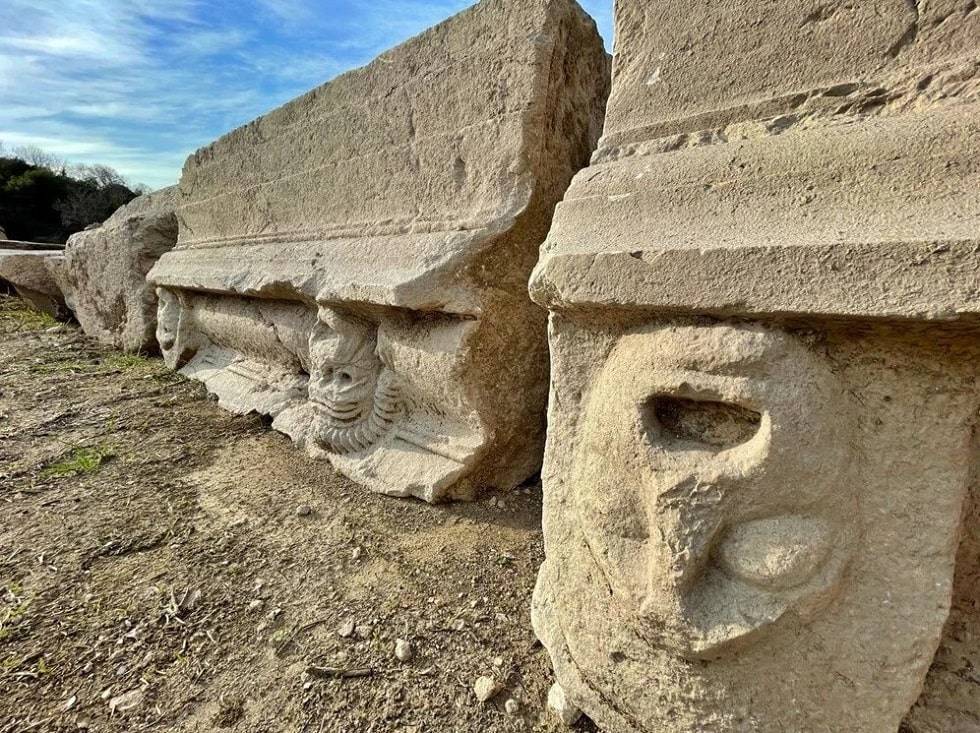Embossed masks representing comedy and drama plays performed at the period were discovered in the construction blocks of the theatre in kastabala ancient city, known as the Ephesus of, Çukurova which dates back to the 500 B.C. The excavations in Castabala Turkey, which is 12 kilometres outside the city centre and can still be seen today with its columnar roadway, theatre, bath facility, churches, and mediaeval fortress, have come to an end in 2021.

Last year’s digs largely disclosed the old city’s stage, and the discovery of ten embossed masks sparked interest. The masks discovered were constructed with a glum face for drama and a smiley mask for comedy, and they were made with a melancholy face for drama and a cheerful mask for humour.
Dr. Faris Demir, the head of excavation at Osmaniye Korkut Ata University’s (OKU) Department of Archaeology, stated:
Kastabala Ancient City is the most important and only sacred city of Ovalik Kilikya. Demir stated that the Turkish Historical Society supported the excavations carried out in cooperation with the Ministry of Culture and Tourism and OKU. We have uncovered a large part of the theater in as little as 2 years”.

♦ Tour de 6 días por Turquía: el mejor paquete turístico de Turquía
Emphasizing that the 10 embossed masks in the theater of Castabala Turkey create excitement and happiness in the team, Demir stated:
“These masks represent the drama and comedy plays performed in the theater. Drama and comedy were often performed in these theaters. The masks depicted for comedy games depict funny expressions and for drama games, scary and scary facial expressions are depicted. Pan Goat stands out among the masks depicted.”

Stone axes and spear ends were also discovered in Castabala Turkey, according to Dr. Demir. He added:
“We are excavating a theater belonging to the Roman Imperial Period, but the increasing number of qualified finds dated to the Neolithic Period in the filling soil that came from the upper part of the theater indicates that Kastabala was an important center from prehistoric times. We will carry out excavations in these areas in the following years.”

